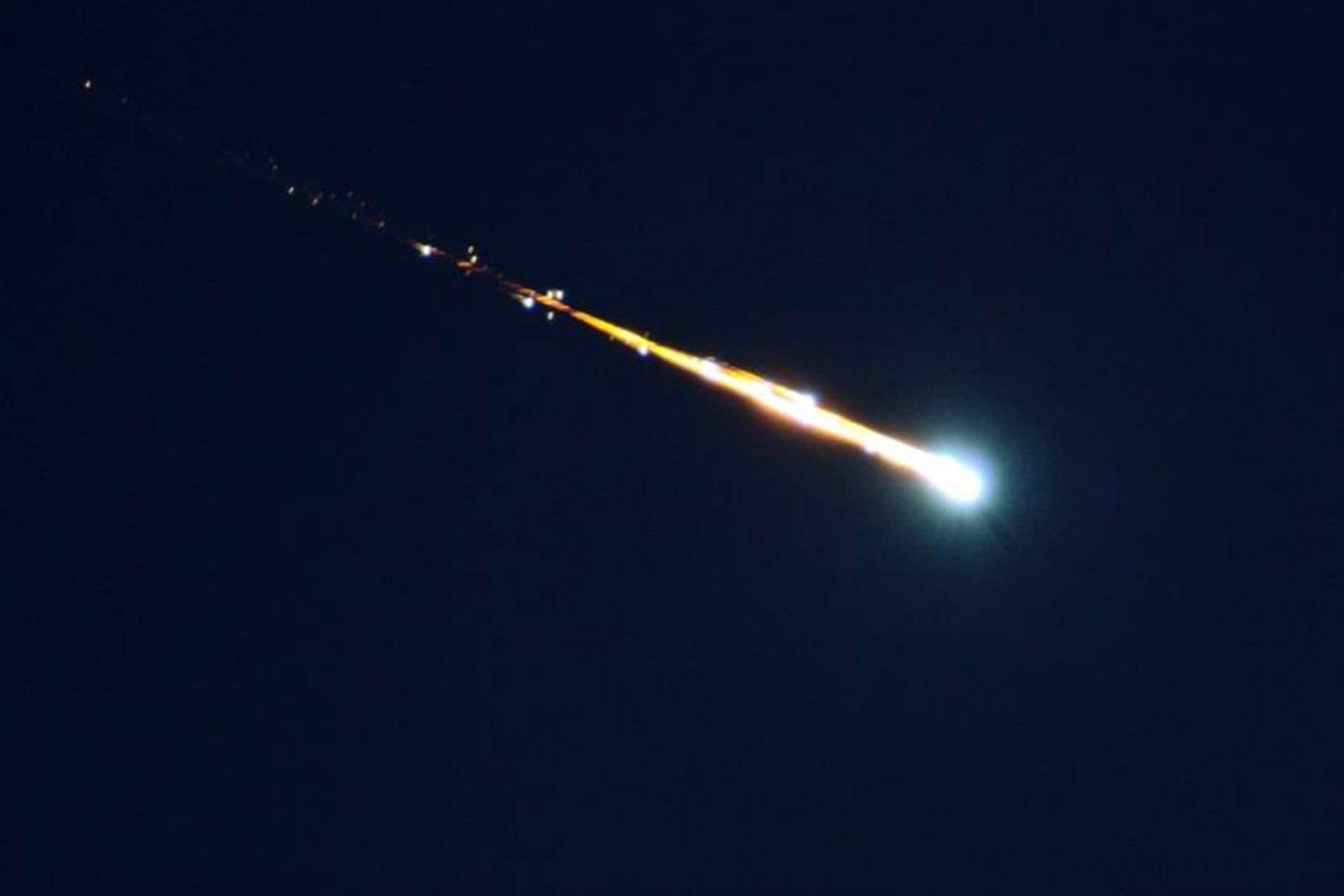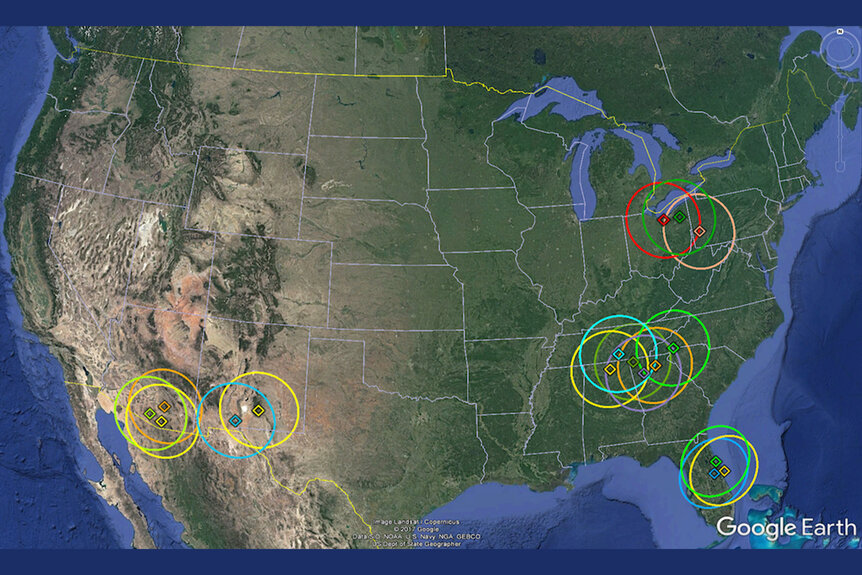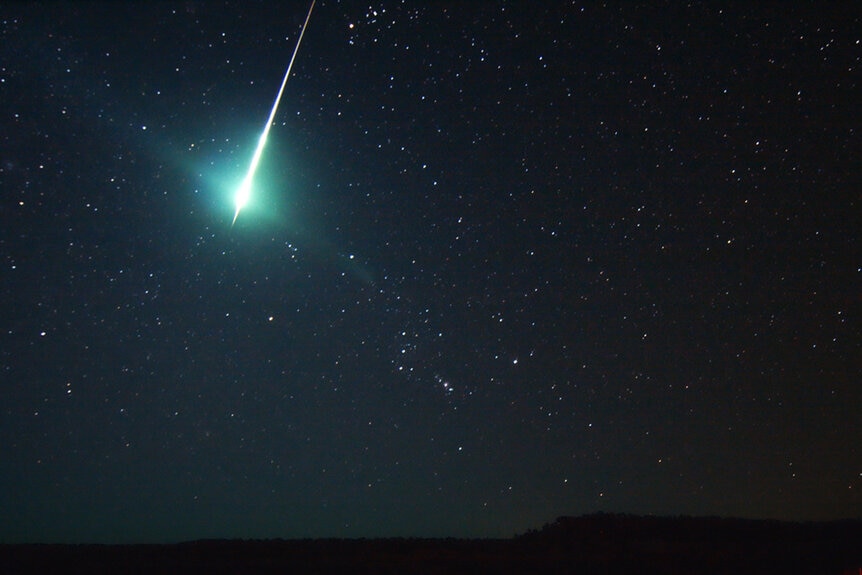Create a free profile to get unlimited access to exclusive videos, sweepstakes, and more!
What Is NASA's ASGARD Fireball Detection Program?
Protecting our spaceships from dangerous meteoroids.

In Norse mythology, Asgard is the exalted homeland of the gods and the location of Valhalla. It’s there that the embodied powers of good and evil dictate the course of the universe, their reality-shaking skirmishes occasionally shedding celestial shrapnel on our world. It’s appropriate then, that the name ASGARD would become associated with a program to protect humanity and her spacefaring machines from cosmic sucker punches. If you want to know more about Asgard, the heavenly realm of myth, then check out Vikings (streaming now on Peacock). If you want to know more about ASGARD, the fireball meteor detection system, read on.
NASA’s ASGARD All Sky Fireball Network
There’s a lot of work that goes into launching a rocket. Before you can strap millions or billions of dollars to a controlled explosion and blast it into space, you want to make sure it has the best chance of success. Behind every mission there are countless teams, projects, and offices focused on specific problems, things most of us never have to think about. The Meteoroid Environment Office (MEO) is one of those.
The MEO is tasked with monitoring, understanding, and modeling the meteoroid environment in near-Earth space and beyond, especially as it relates to spacecraft operations. The office was established in 2004 and operates out of NASA’s Marshall Space Flight Center in Alabama. The office was set up to detect any fireballs, meteors which explode and burn more brightly than Venus, in the night sky. To do that, the MEO relies on a collection of skywatching cameras called the All Sky Fireball Network.
For More on Meteors:
Making Sense of Big Bertha, a Meteorite FROM Earth, Found on the Moon
In 1954, a Woman Was Struck by the Sylacauga Meteorite and Lived
"Boomerang Meteorite" Left Earth, Went to Space, Then Came Back
The network is composed of 17 cameras in various locations around the United States. Six of them are clustered in the southeast (Alabama, Georgia, Tennessee, and southern North Carolina), three are in the northeast (Ohio and Pennsylvania), five are in the southwest (New Mexico and Arizona), and three are in Florida. Each black and white camera is equipped with a lens capable of capturing a complete view of the night sky from its location, covered by a protective dome, complete with climate control. A thermostat and light sensors track the temperature and time of day to warm up the camera when it gets too cold, and fans circulate air to prevent moisture accumulation.
The cameras are also equipped with All Sky and Guided Automatic Real-time Detection software, ASGARD for short. ASGARD is capable of taking in video data from the camera network and automatically detecting fireballs, as well as some fainter meteors, when they happen. In some places, the cameras’ fields of view overlap, allowing scientists to capture fireballs from multiple angles. The data captured by the All Sky Fireball Network and ASGARD is used to create models of meteoroid activity which spaceship designers and operators can use to keep their crafts safe.
The team has released meteoroid environment models crunching the numbers on potential encounters for anywhere in the inner solar system. That’s useful if a spacefaring vessel wants to avoid a potentially fatal collision with a tiny rocky bullet. In addition to modeling the overall meteoroid landscape of the solar system, the models have a particular focus on how meteor showers influence near-Earth space. Understanding the cyclical ebb and flow of meteoroids left behind by asteroids and comet trails is crucial for protecting satellites and astronauts hanging out in low-Earth orbit.
The real-world ASGARD may not be as cool as the ancient mythological paradise, but it is helping to prevent spacecrafts from suffering a personal Ragnarök. That’s almost as good.
Catch six seasons of Vikings streaming now on Peacock.




























